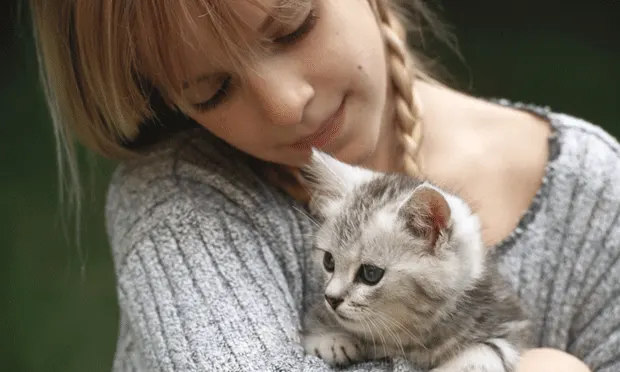Educating Clients on Kitten Behavior
Debra F. Horwitz, DVM, DACVB, Veterinary Behavior Consultation
Amy L. Pike, DVM, DACVB, Animal Behavior Wellness Center, Fairfax, Virginia

What important information should I provide to clients who want to add a kitten to their family?
Setting a kitten up for success takes careful selection, proper socialization, and suitable environmental management and enrichment.
Purebred or Mixed-Breed?
Owners should determine which physical (eg, coat, size) and behavioral traits they find important. In cats, genetically related behavior problems have been kept to a minimum primarily because of the lack of selective breeding and a diverse genetic pool.1 Paternal genetics do play a role in sociability,2 but in most cases knowledge of paternal personality traits is unlikely.
When is the best time to adopt?
Adoption before 6 weeks of age is not recommended. This important developmental time accommodates weaning and the early formation of substrate preferences learned from the queen.3 Kittens taken from their mother before 2 weeks of age can be markedly fearful and overly aggressive toward humans and other cats.4
However, it is important to get the kitten into the new home during the sensitive period of socialization—3 to 9 weeks of age—as research has indicated that early handling may result in less fear-based behavior toward humans later in life5,6 and the kitten is better able to bond with its new family. Owners should be encouraged to introduce the kitten to as many different people and places as possible during this time as well as during the entire first year.
Bringing the Kitten Home
A Safe PlaceA safe place (with food, water, litter box, toys, and a bed) should be created to help the kitten become acclimated to its new home. Daily supervised excursions into the rest of the house will allow gradual investigation of the new surroundings. The kitten should be returned frequently to its safe place for rest and elimination.
Litter BoxesLitter boxes should be tailored for the kitten, with lower sides and easy access but away from busy areas. Litter boxes must be kept clean, scooped twice daily, and emptied, washed, and refilled weekly. In larger homes, litter boxes may need to be placed on all floors. If other cats are already present in the home, at least one litter box should be provided for each cat.

Meeting Daily Needs
PlayPlay is an important aspect of kitten development; it fosters appropriate and strong bonds between the kitten and owners and meets exercise and enrichment needs. To avoid injury to people, all play with kittens should occur with toys, never with human hands or feet.
In multicat households, safe intercat play can be encouraged by placing a long ribbon with a toy on each end underneath the closed door to the kittens safe place. The resident cat(s) and new kitten then have an opportunity to interact through play activities during the acclimation period.
Predatory play behavior is an integral part of kitten play, and appropriate outlets can be provided using commercial feeder toys that allow a daily food ration to be dispensed through play and manipulation, mimicking a more natural feeding behavior.
Declaw or Not?
It is not necessary to declaw a cat for it to live in harmony with furnishings; however, training must start early.
Scratching is a normal behavior that cats use to mark their territory, stretch, exercise, and condition their claws. Kittens need a scratching surface that is appropriately sized and attractive. To encourage use, owners should offer different options (horizontal, vertical, sisal, carpet) until the kitten has decided its preference.
Tips to Increase Acceptance of a Scratching Post
Location is everything when it comes to getting the kitten to use the provided scratching material! Place one preferred scratching surface in the kittens safe room and another where it spends family time. Make the scratching surface appealing and fun, integrating perching, climbing, play, and resting areas. Sprinkling catnip on the post or mat can make it more attractive.
Making areas where you do not want the kitten to scratch unpleasant can also help. Use double-sided tape (StickyPaws.com) on plants and furniture and discuss with owners the role of good supervision in discouraging kittens from scratching in the wrong places.
Creating Lifelong Bonds
Handling exercises and introducing the kitten to different people and places may make later medical treatments and routine care easier to administer. Encourage owners to use gentle handling techniques several times a week, such as grooming the kitten with a soft brush, touching its feet and ears, opening its mouth, and gently trimming 1 or 2 nails. Advise owners to pick a time when the kitten is quiet and relaxed and keep handling sessions short. Use delectable food treats before, during, and after sessions to help associate them with good things.
Closing Remarks
Getting a new kitten is an exciting time filled with joy and many decisions. Arm your clients with good and accurate information on kitten behavior to help them form a lifelong, enjoyable bond with their kitten that will hopefully last well into the cats senior years.
Early Crate & Harness Training
Kittenhood is the best time to acclimate a kitten to crates and car travel to make traveling to the veterinary hospital less stressful. While different types of crates are available, top-opening creates facilitate easier entry and exit. Once owners obtain a crate, they should leave it out and open in a common area. Treats and comfortable bedding should be placed inside and the kitten praised and offered a treat each time the owner sees it in the crate. Kittens can also be taught to wear a harness and leash for safe outdoor access.
An informative article on crate training is available from the Cat Council, and a helpful crate-training video can be viewed at the Catalyst Council website.
Key Points:
Kittens need a safe place to become acclimated to their new home.
Daily needs for enrichment and play need to be met.
Handling and socializing kittens at an early age are important for behavioral health.
Scratching behavior is normal, and if proper outlets are provided, there is no need to declaw.
Early exposure and training will provide a lifetime of happiness with a kitten.